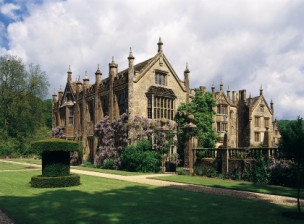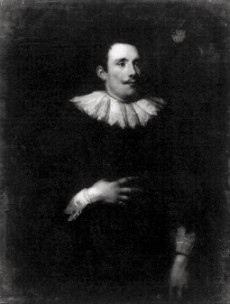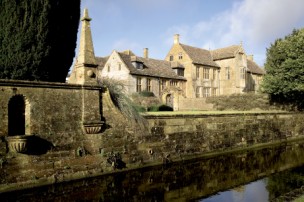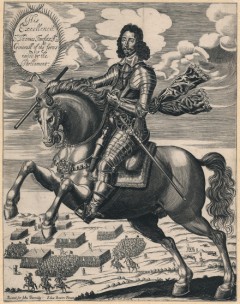Named after his grandfather he was the eldest son and heir of Sir William STRODE knight (1561-1637) of Newham in Devonshire by his first wife, Mary the daughter of Thomas SOUTHCOTE of Bovey Tracey in the same county. His father was the only child of Richard Strode, landowner, of Newnham, Devon, where the family were established by the reign of Edward I, and his wife Frances Cromwell. He was educated at the Inner Temple, and became a friend of Sir Francis Drake and Sir Walter Ralegh, and commanded the local stannary regiment during the Armada campaign of 1588. His family had regularly provided MPs for the adjacent borough of Plympton Erle since 1437; but in 1597 he became the first to represent the county. Knighted by the queen in the following year, he was appointed surveyor of Crown lands in Devon for life, and sat for local constituencies in the next seven Parliaments. His father is celebrated in Prince’s Devonshire Worthies as “ a person of great honour, worth, and esteem in the county”. He married a second time to, Dennes, the daughter of Stephen VOSPER of Liskeard, Cornwall, on 31 March 1624; but she died without issue in 1635. His father died on 27 June 1637 in his 76th year of age.
William & Mary had three sons and seven daughters, all married into prominent Devonshire families, two of them to baronets and four to knights. After Richard, who we will come to, their second son was:-
William STRODE (1594-1645) A much longer account of his life is given in the Oxford Dictionary of National Biography. He was baptised 6 Nov 1594 at Bovey Tracey in Devon and admitted to the Inner Temple in 1614; educated at Exeter College which he entered on 9 May 1617 at the age of 18. He graduated BA 20 June 1619. In the last Parliament of James I and the first three of Charles I he represented Beeralston.
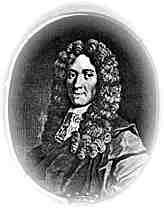
On 2nd March 1629 when the speaker at the behest of Charles I tried to adjourn the House and refused to put Eliot’s resolution to the vote, Strode played a great part in the disorderly scene that followed. Denzil HOLLES the MP for Dorchester (<<< See picture left) was one of two MP’s who forcibly held the speaker in his chair. The next day Strode and others were summoned before the council. As Strode declined to come, he was arrested in the country and committed first to the king’s bench prison, then to the Tower, and thence to the Marshalsea. When he was proceeded against in the Star Chamber he repudiated the jurisdiction of that court, and refused to answer outside parliament for words spoken within it. As he also refused to be bound over to good behaviour, he remained a prisoner until January 1640. The Long Parliament (1640-1660) voted the proceedings against him a breach of privilege, and ordered £500 compensation for his sufferings. He returned to Parliament as MP for Beeralston in 1640 and was a fierce opponent of the King. His most important act however was the introduction of a bill for annual parliaments.
He was one of the five members of the House of Commons impeached by Charles I on 3 June 1642 and on the following day the king came to the house in person to arrest the members. According to D’Ewes it was difficult to persuade him to leave the house even when the kings approach was announced. When all persuasions failed Sir Walter ERLE, ‘his entire friend, was fain to take him by the cloak and pull him out of the house’.
After his impeachment William Strode was naturally the more embittered against the king and when the Civil War began he became one of the chief opponents of attempts at accommodation with Charles. He was a Parliamentary Colonel and was present at Edgehill and sent by Essex to give an account of the battle to Parliament. In 1643 his house was plundered by Sir Ralph Hoptons troops and the House of Commons indemnified him out of Hopton’s estate. He died of fever at Tottenham early in September 1645. On 10th September the house ordered that he should have a public funeral and be buried in Henry VII’s Chapel in Westminster Abbey. At the restoration his remains were disinterred by a warrant dated 9th September 1661.
William and Mary’s third son was:-John STRODE (1600 - ?) He also went to Exeter College at Oxford which he entered 24 Oct 1617 at the age of 17. He transferred however to Broadgates Hall where he obtained his BA 11 May 1621. He proved to be a great favourite of the nobility and gentry who spent much of his time about London. He was counted to be the best bowler in all England.
Sir Richard Strode (1584-1670)
On 31 March 1624 at a meeting in the Free School in Dorchester his brother-in-law Sir Walter ERLE, was elected Governor of the Dorchester Company, often rather grandiosely called the New England Planters Parliament, of which Sir Richard Strode was himself a member. As a member of this committee he was closely involved with the schemes of the Rev. John White and actively involved in the foundation of the colony. Even after the company folded in 1626/7 he and his brother-in-law were involved, for example, in the transportation of 20 cattle and other commodities to New England to keep those left behind supplied.
He was also active as a Justice of the Peace serving at the Quarter Sessions held by rotation at Beaminster, Blandford Forum, Sherborne, Shaston and Dorchester. Apart from his brother-in-law Sir Walter ERLE, he often sat with Sir Francis ASHLEY and Sir John BROWNE other Justices who had invested in the Dorchester Company. There are references to him on cases in Sir Arthur Ashley’s ‘casebook’ during 1623 and 1625 and in the Quarter Sessions order books for 1625-1638.
He married three times:-
1st. to Catherine daughter and co-heir of Sir Robert STRODE of Parnham Dorset by whom he had 3 daughters : Elizabeth baptised Beaminster 23 Sep 1605 (when he appears to have been in the Militia); Frances whose baptism has not been located and perhaps was baptised in Holy Trinity in Dorchester; and Catheryn also baptised in Beaminster on 20 January 1608/9. Unfortunately Lady Catheryn appears to have been buried there the same day so presumably died during childbirth.
2nd. to Elizabeth daughter of Thomas ERLE of Charborough in Dorset and Dorothy POOLE. He was therefore brother in law to Sir Walter ERLE (1586-1665) another investor in the Dorchester Company and a close friend of the family. they had a son Sir William STRODE Knight who continued the family and seven daughters.
3rd. to Anne daughter of Sir John DRAKE (knight)
There is reference in the book ‘Fire from Heaven’ by David Underdown as follows ‘ besides coming from Parnham Sir Richard & Lady Strode had several of their children baptised at Holy Trinity’. Unfortunately I do not have access to the Parish Registers in Dorset at the moment to discover who these were.He also refers to an incident involving Richard Christmas of Sydling who was a notorious enemy of the Puritans:-
‘When the pious Lady Strode was returning to Parnham after hearing Mr White preach in Dorchester, Christmas intercepted her coach, asked the footman’ how many Puritans there were in that company? and fired a musket shot which terrified the party.
NOTE:- Sir Richard's subsequent deteriorating relationship with the Parnham branch of the Strode family after the death of his first wife; the publication of his almanack; his imprisonment for debt; and mental health are all covered in an article written by Alan J Miller in the Dorset Life On-line magazine which is recommended to those interested in the history of Dorset. In addition to the direct link to this site I have re-produced it below to make sure it is not lost or buried in an archive somewhere. It does concentrate upon the murder of Lady Strode who was the wife of Sir John Strode the owner of Parnham rather than Sir Richards wife [whose name was Catherine not Mary] but it fully explains Sir Richard's involvement and needs no additional comment from me. The Pedigree of the STRODE Family of Parnham was drawn up by Sir John STRODE of Parnham & Chantmarle from "ancient pedigrees, evidences and records" in his possession in 1636 when he was 75 years old and continued by his successors. It was published in the History of Antiquities of Dorset and an extract for the parishes of Netherbury & Beminster [now Beaminster] which contains the pedigree on pages 130/132 is available to view to members on Ancestry.com. Among other things it confirms the correct name of Richards first wife.
| Murder most foul | ||||||||
| Alan J Miller investigates the killing of Lady Strode at Parnham during the Civil War |
||||||||
‘And near that day one of his soldiers with his sword casually killed Lady Strode in that same place.’ So wrote A. R. Bayley in his book, The Great Civil War in Dorset 1642-1660, published in 1910. The soldier was one of those under the command of Colonel Fairfax, the Parliamentary commander in the West, and ‘that same place’ was Parnham House near Beaminster. It was one of the examples of gratuitous violence that occurred during the 1640s when England was rent by the Civil War.
Hostilities broke out in 1642 when the King moved to Nottingham and raised the Royal Standard on 22 August. The people of England had to decide on which side their allegiance lay. It divided families, sons against father and brother against brother and subjected the towns and countryside to devastation as the opposing armies swept across the counties. None of the major battles was fought in Dorset but the county was important, for it controlled the route to the west and the important port of Bristol, and there were some major skirmishes with loss of life and damage to property. The ports of Lyme Regis, Weymouth and Poole were Parliamentary strongholds but the rest of the county gentry and the countryside at large was divided in its loyalties. Who was this Lady Strode who suffered such an horrendous death on 5 July 1645? She was born Ann, one of the six daughters of Sir John Wyndham and his wife, Joan Portman, of Orchard Wyndham, Somerset. The exact date of her birth is not recorded, but in 1621 she married as his second wife Sir John Strode. He was then about sixty years old but she was obviously considerably younger and their first son, John, was born in 1624. The Strodes were a very ancient family originally settled at Newnham in Devon, but one branch of the family had established itself at Parnham in 1428 when a Richard Strode married the heiress of the Gerard family. Sir John Strode had acquired from the Cheverell family the estate of Chantmarle, about ten miles to the east of Beaminster in the parish of Cattistock, and built a new house there in 1612. He was a lawyer by profession and gained a reputation as ‘an honest, trusty, learned, religious gentleman’. He was Recorder for Bridport in 1614 and MP for that borough in 1621 and 1625. Like so many of his fellow-landowners he was torn between loyalty to his monarch and his sense of what was just and right. He was then approaching his eightieth year and so beyond military age, but he moved to Oxford to support the Royal cause with legal and financial help, leaving his wife in charge of the Parnham and Chantmarle estates.
Searching for the date and place of her burial proved fruitless as the original registers of Beaminster parish church were destroyed in a fire in 1684. There were copies known as Bishop’s Transcripts sent to the Dean of Sarum but there was a gap in them between 1638 and 1669, presumably due to the disruption of the Civil War. At this point the matter takes on all the marks of a modern detective investigation. Bayley’s book, though written nearly a hundred years ago, is still regarded as the first work to which a reader would turn for information on this period in the history of Dorset, but how reliable is his information and where did he get his note about Lady Anne’s death? In his footnotes he states that she was the eldest Wyndham daughter, when in fact she was the third. Modern authors lay out their sources in great detail but Bayley at the end of his work merely refers to ‘newspapers and tracts’. An enquiry at the British Library in London revealed some 22,000 items printed in London between 1640 and 1661 and covering important religious and political conflicts of the Civil War. Narrowing it down to 1645, a professional researcher was set to work but abandoned it after a few hours as it was clear that the reports and tracts did not cover personal incidents of the type for which he was searching.
It looked like the end of the trail but then another clue surfaced in the form of a note that Charles H. Mayo, a respected local historian, wrote for the Somerset and Dorset Notes and Queries in 1903. In it he said that he had been shown by Mr A. M. Broadley a little book bound in calf leather called An Ephemeris for the Year 1652 by Nicholas Culpeper, which was not only curious in itself but which had been interleaved with blank pages with handwritten comments on religious and legal matters. From the evidence of the writing, Broadley had come to the conclusion that this copy of what he called Culpeper’s Almanack had once belonged to Sir Richard Strode of Newnham, Devon, and that he was the author of the handwritten comment. These rambled over many topics but on page 15 launched into a bitter attack against the Strodes of Dorset, whom Sir Richard accused of illegally holding the Parnham estate. Did Broadley show or even lend Bayley this book from which he picked up the comment about the killing of Lady Ann? Where was that book now? An enquiry to the British Library, ever helpful, revealed that they had a copy of Culpeper’s book, but on production it proved to be ‘clean’; the annotated one which had belonged to Broadley must have gone to a private collector.
What was the reason for the dispute between the two branches of the Strode family? Sir John’s elder brother, Robert, who died in 1616, had married Mary Luttrell [or Luttererel] of the Dunster family but they had only a daughter, also called Mary [incorrect called Catharine] , and in the absence of a male heir he had settled all his Dorset lands including Parnham on his younger brother, Sir John, in trust on the male line by a Settlement of 1585. This daughter Mary [Catharine] married as his first wife Richard Strode of Newnham, later Sir Richard and owner of the ‘Almanack’, and they had three daughters Elizabeth, Frances and Katherine, who as females were not eligible to inherit the estates. But when Mary [Catharine] died in 1608, Sir Richard married again to Elizabeth the daughter of Thomas Erle of Charborough and she dutifully produced a son, William. Sir Richard therefore considered William as a boy the rightful heir to the Parnham estate under the terms of the 1585 Settlement. But Sir John did not see it that way and with his legal knowledge consistently blocked Sir Richard’s attempts to bring the matter to court.
The legal wrangling was made more bitter by the fact that the contending parties were on opposing sides when the Civil War broke out, Sir John being a staunch Royalist, but the Newnham Strodes on the side of Parliament as evidenced by William, Sir Richard’s brother, being one of the members of Parliament the King had tried to arrest in 1642. Was there a member of the Newnham Strodes who arrived at Parnham with Colonel Fairfax’s force in 1645 or was it just a soldier who struck down Lady Strode as she undoubtedly tried to bar their entrance to the house? There was a theory held by recent owners of the house that a Newnham cousin was there and ordered Lady Strode to be beheaded, but there is no evidence to support this belief. Sir John had died at Oxford in 1642 and Lady Strode’s eldest son, John, then aged 21, was being held a prisoner of Parliament in Taunton. Were her other three sons – George (19), Hugh (17) and Thomas (16) – in the house when their mother was so brutally butchered? She was not alone among Dorset ladies in her spirited defence of her husband’s property: Lady Bankes at Corfe Castle and Ann Digby at Sherborne New Castle both survived, but Lady Strode paid the price for her defiance.
It still leaves the manner of her death, possibly recorded only by a scribbled comment in a book now lost, with a question-mark. It is noteworthy that her eldest son, John, who inherited both Parnham and Chantmarle, never attempted to bring anyone to justice for his mother’s death. Sir Richard’s son, William, died young but his half-sisters, or rather their children, continued to pursue their claim and eventually John Strode was ordered to pay £3300 compensation but appears to have got away with a lesser sum. Later pages of the Almanack make it abundantly clear that Sir Richard Strode was mentally unstable and ended up in the Fleet prison with debts of £200. Whilst there he wrote long epistles to Oliver Cromwell setting out his grievances and he was eventually released as being of unsound mind. When he died in 1669 he left to King Charles II ‘the manor of Parnham which is or ought to be mine’. Even beyond the grave he kept up his campaign. |
Sir Richard STRODE died on October 9th 1669, at Plympton St Mary. His Will dated 20 July 1669 was proved on 27 July 1670
1670; Source [OXA](Ref: Dorset Visitations 1623, p. 37).[DV](Ref: Dorset Visitations 1677, p. 96).[QS] Oxford DNB: Biography by C. H. Firth 1993 [RT]Devonshire Parishes by Charles Worthy(Somerset and Dorset N. and Q., VIII. 201; Burke, L.G.)Records of the Prerogative Court of Canterbury, Name of Register: Penn Quire Numbers: 67 - 128; PROB Ref 11/333 :FFH: OPC Beaminster; History of Antiquities of the parishes of Netherbury & Beminster which contains the pedigree of the Strode family of Parnham.
